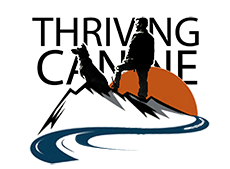Guest Blogger, Dr. Greg Martinez Dvm, provides a veterinarian's point-of-view on feeding raw meaty bones to our dogs.
We’ve all heard that we should never feed our dogs chicken bones. We have also heard that eating bones can cause fractured teeth, constipation, and bowel obstructions. Some of us have heard that feeding bones to dogs is just a bad idea. In fact, Carmela Stamper, Dvm of the FDA, has adopted a stance against feeding “bones” to dogs. The recommendations are based on a general warning of not feeding bones without really specifying what kinds of bones cause the most problems. I agree that feeding some types of bones can be dangerous, but I feed my dogs raw meaty bones and advise my readers and clients to do the same.
Yes, it’s true; there is a veterinarian that recommends the feeding of raw meaty bones.
We probably know that our domesticated dogs come from the wolf and are the result of intensive breeding for traits that we wanted in our working dogs or companions. While it's difficult for me to see the wolf in my 8 pound silky cross, Maisy, it sure doesn't stop her from knowing what to do with a smoked pork shank, raw chicken wing, or raw lamb bone!
You’ve noticed by now that I feed and recommend raw meaty bones. That’s because hard and brittle, baked or barbecued bones can result in broken teeth or punctures to soft tubes like the esophagus or intestines. Those big, baked circular beef leg bones (femurs) available at pet stores can fracture the shearing carnassial teeth or get stuck on the lower jaw. A cooked rib bone or stick can become lodged between the teeth of the upper jaw, causing a dog to paw at their mouth. At the risk of repeating myself, I feed and recommend raw meaty bones. (I cringe when my nephew feeds his dogs cooked rib bones! So far he hasn’t had problems, but his German Wirehair Pointers do completely mash up the cooked rib bones. I don’t condone this practice, but know that many dogs are fed cooked rib bones.) A hard, brittle, baked or barbecued turkey leg can splinter and pierce soft tissues. There is a huge difference between raw bones and baked or barbecued bones. Raw bones are the natural food of dogs and the reason their teeth have evolved to be the shearing and chewing machines they are. I’m always amazed how dogs that have never chewed on bones instinctively know what to do! It seems to make them so happy!
We are so used to tossing bones in the garbage; we forget they are filled with minerals and the components of the cartilage lining our joints. Several years ago, I realized that dogs and humans take cartilage pills to make up for the lack of it in our diet. The glucosamine and chondroitin pill (components of cartilage) are probably needed because our diet and our pet’s diet may lack enough cartilage to keep our joints healthy. (Is that why so many dogs develop arthritis?) Nowadays, the chicken bones from my dinner plate are always missing the ends of the bones and the gristle. Why take a pill, when I can nourish my joints with the cartilage and soft bones? I feel the same about our pets. Raw bones and joints contain the ingredients to nourish, maintain, and repair bones and joints. It makes sense that a diet that includes these ingredients may keep the joints healthier and prevent arthritis.
Chewing on raw bones also helps take the tartar off Fido's teeth while keeping them clean. Since I started feeding raw bones to my three dogs, they haven’t needed, and probably will never need a dental cleaning. Just think…feeding a raw bone once to twice weekly may be the only dental cleaning your dog will need. They can do that just like their ancestors did. All on their own!
It is important that dogs just don’t gulp down large bony pieces. Dogs can easily digest larger raw chicken bones, but large pieces of denser beef bones may get stuck halfway through the bowel and require medical attention. Normally, a dog will slowly chew or break the raw bone into small pieces that are easily digested. Dogs that want to gulp and swallow big bony pieces may be better candidates for chicken necks, thighs, and wings. Poultry bones are lighter, less dense, and can be easily digested even when swallowed whole!
Eating too many bones at one sitting may turn the poop a bit whiter than normal or even a bright white color. Too many bones eaten at one sitting can also cause constipation. Dogs were meant to eat the bones included with the meat and organs of the prey, not several pounds of bones all at once. I’ve seen a few constipated dogs a day or two after they snagged a whole holiday turkey carcass out of the garbage. But don’t worry too much; a dog has to eat quite a few meaty bones to become constipated.
If raw meaty bones scare you, you can slow cook meat and bones for 12-24 hours with veggies or brown rice. The crumbling bones yield the nutrition of the bones, joints, and marrow. Many hesitant clients started cooking the stew, then graduated to raw chicken wings, and then to larger bones as they felt more comfortable with the practice.
Feeding your dog a better diet is really the key to coping with allergies or other medical problems. Skin problems, ear problems, seizures, bowel problems, and bladder problems often respond to different ingredients or type of diet.(limited ingredients in commercial food, canned , raw, home cooked). Once I started advising my clients to feed their pets differently, their pets got healthier, and I felt better too!
For more information, check out my website, Dog Dish Diet for my blogs and books, Dog Dish Diet (education about diets, ingredients, and medical issues and one slow cooking recipe) and Feed Your Pet to Avoid the Vet (intro to slow cooking for your dog and cat).
-Dr. Greg Martinez, Dvm
© Thriving Canine 2013



